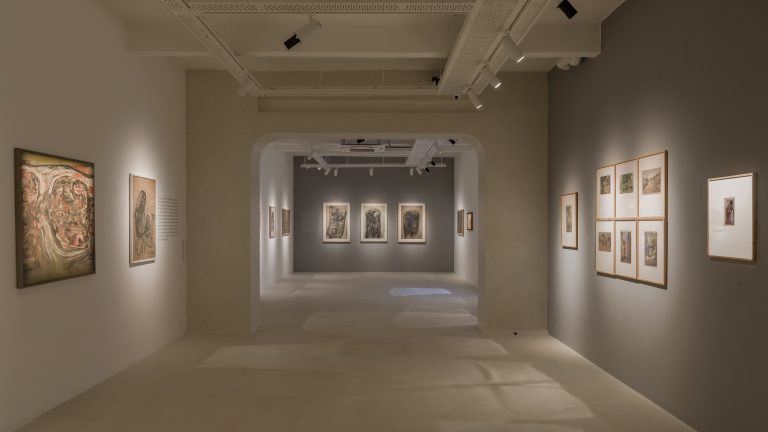
Few artists have so consistently explored the themes of identity and belonging like Sanna Sevika Hansson. Born in India, raised in Sweden and based in Istanbul, her work is like a constant roadshow, a wild traveling circus exploring the complexity of ethnic, social, and cultural encounters in a globalised world. Through a series of art projects occupying the borderland between sculpture, design, and installation, Hansson has been on an endless inner and outer journey in search of what it means to be and belong.
A child refugee lost in the 1971 Indo-Pakistan War and adopted to Sweden at the age of three, Hansson has always had an intense personal relationship to the themes of ethnicity and cultural differences. But Hansson’s art is universal, her search for belonging turned into something intrinsically human and contemporary that characterises all people in all societies.
In the lobby of a large EU Institution high up on the rocky shores of Alicante, Spain, stands the permanent art installation Inga from Sweden, Hansson’s perhaps most daring project to date. Overlooking the same Mediterranean, so many boat refugees have crossed in search of a new home, Inga challenges the very idea of national identity. Titanic blonde hair, four meters long, hangs from the ceiling all the way down to the floor, barely covering an Asian girl lying on the floor. The big hair is full of tiny figurines, little people painted in black. Like weeds, lice – or immigrants – they’re stuck in the beautiful mane.

It’s a massive, striking piece. Clearly an abstraction and a symbolic interpretation, but also documentation. The sculpture is a three dimensional scan of a real Swedish girl adopted from Korea, the hair from a commercial wig manufacturer, and so on. Surreal, but also real.
With Raincheck, an upcoming installation under construction in Finland, Hansson continues this dialectic. But while Inga had clear racial and political dimensions, Raincheck seems more focused on the primal Mr. Hyde inside us – the dark subconscious, the black bile within.

A glass house with rain falling from the ceiling inside, Raincheck seems like an abstraction of a home – the definite symbol of identity and belonging – but you’re an unwelcome stranger in your own home. Like Freud’s ‘uncanny’ (in German unheimlich – literally, ‘un-home-ly’) it gives that eerie feeling of something that’s familiar, yet uncomfortably strange. The absurdity of the raining house plays like a bizarre fairy tale, its inter-textual commentary balancing the black self-destructiveness with light and hope.
These contrasts – black/white, holistic/linear, spiritual/intellectual, surreal/real – have always been strong themes for Hansson. But while her recent work uses a dreamy, poetic discourse, her earlier work emphasised the role of objects as a way to define who we are – and who we are not. Hansson’s breakthrough – the sculptural chairs Realities in a Meeting – is a fusion of Indian and Scandinavian notions of the concept of function. Merging the spiritual Indian (colourful decorations and ornaments with symbolic and spiritual meaning) with the intellectual Swedish (archetypical form and subtle, practical materials) the chairs combine a spartan Scandinavian wood structure with decorative Indian attributes. Like yin and yang, Hansson seems to suggest that in order to make sense of the world, we need both. That a meeting of the two is possible, a beautiful, postmodern hybrid rather than a destructive clash of civilizations.

With Be Anywhere, Hansson took this approach even further. Inspired by the parallel between borderless migratory birds – with their remarkable ability to adapt to new environments – and modern man’s migration, Hansson travelled to the world’s biggest immigration cities: Cairo, Shanghai, New York and São Paulo. Over seven months, Hansson and Anywhere, a stylised sculpture of a migratory bird, moved in with 101 strangers and let them use Anywhere the way they saw fit. The photographs of Anywhere in the homes is a fascinating account of the role of objects for our identification, our willingness, or lack thereof, to accept the unknown. Continuing her long journey home, Sanna Sevika Hansson is now based in Istanbul, the very vortex of east/west, past/ future, us/them – an entire nation wanting to belong in Europe while trying to understand its true roots. It’s not surprising that this is where she has chosen to set her traveling circus down, if only for a while.














